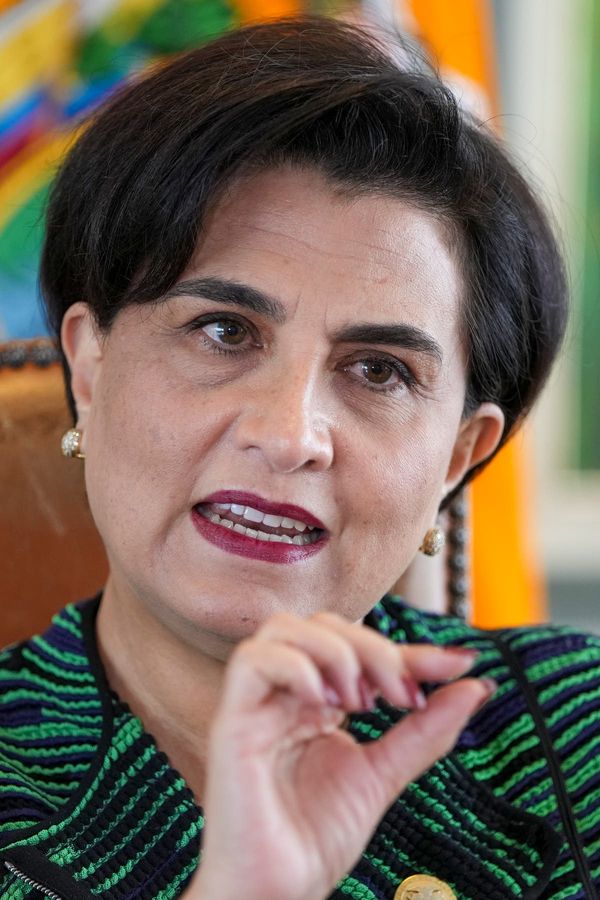
While overseas markets celebrate a 'Goldilocks scenario', New Zealand consumers price index data this week is set to reveal an inflation headache.
The release of the latest headline inflation figure this Wednesday is likely to be one of the year’s most closely scrutinised economic data points.
After the Reserve Bank opted to leave the official cash rate unchanged last week at 5.5 percent, its first pause since it began hiking interest rates in October 2021, the spotlight now turns to the country’s inflation rate.
Australia has entrusted management of inflation to a new monetary policy decision-maker, Michele Bullock. So which will be more effective as easing inflation, Australia's lower interest rates or New Zealand's higher rates?
Expectations are for the second quarter inflation rate in New Zealand to have eased below 6 percent, from 6.7 percent in the first quarter, though the real focus will be on the ‘core rate’ which strips out food and energy prices.
READ MORE: * The Detail: Is it inflation, or are businesses just greedy? * Surging food prices are a risk to managing down inflation * The impact of inflation isn't 7.2% but a big 8.7%
In the US, where new data showed annual consumers price index is now back at 3 percent, core inflation has fallen to 4.8 percent after big falls in commodity prices in the last year, but remains stubbornly above the Federal Reserve’s target of below 2 percent.
It’s a similar story here where sticker than expected inflation in our economy is proving much more difficult to rein in.
News last week that annual food price inflation for the year to June was back at 12.5 percent will not come as any surprise to those doing the weekly supermarket shop.
"It is a challenging time to be coming into this role, but I will be supported by a strong executive team and boards," – Michele Bullock, Reserve Bank of Australia
Fruit and vegetable prices increased by a whopping 22 percent over the last 12 months, poultry and fish prices rose 11 percent and even ready-to-eat meals jumped 9.2 percent.
Compared to the month of May food prices rose by a further 1.6 percent and show no sign of abating.
Despite New Zealand’s annual inflation rate falling in March, consumers would argue they are yet to see any evidence of this decline in prices, particularly on supermarket shelves.
ANZ Bank economists are expecting food prices to account for over 40 percent of this week’s quarterly increase in the CPI, though as they point out such increases are out of step with global moves in food prices where dairy and meat prices have actually fallen.
NZ dollar rebounds on US dollar weakness as markets push higher
The New Zealand sharemarket has some catching up to do today after last week’s Matariki shortened trading week.
After pushing through the 12,000 level once again last Thursday where it has previously met resistance, this time the NZX50 could be about to break higher and follow the lead of other global markets last week.
Across the Tasman, Australia’s ASX200 recorded its best week of the year gaining 3.7 percent following a strong rebound in commodity stocks, while in the US the benchmark S&P500 index gained a further 2.4 percent bringing its year-to-date advance to almost 18 percent.
"The market has been partying like it’s 1999." – Jim Reid, Deutsche Bank
However, local investors will be keenly anticipating the release of this Wednesday’s second quarter CPI data where a surprise lift in core inflation would be particularly unwelcome news.
The New Zealand dollar also experienced its biggest weekly rise of the year gaining 2.6 percent to 63.7 US cents after the US dollar index suffered its worst week in eight months falling 2.2 percent and closing below the 100 level for the first time in more than a year as traders reined in their bets of further interest rate rises thereby pushing the kiwi dollar higher.
“Dollar long positions are evaporating rapidly, with [producer price] numbers all but confirming the disinflationary narrative in the US,” Ing currency analyst Francesco Pesole told the Financial Times.
June’s inflation figures is likely to mean that recent US dollar weakness will persist analysts say, while sterling, the yen, the Swiss franc and the Kiwi all stand to benefit, along with gold, as the dollar declines in value, but will also push up the price of imports in the US.
US earnings season kicks of strongly as confidence lifts
Upbeat quarterly earnings reports from three of America’s largest banks capped a strong week on global equity markets.
Revenue soared to a record at America’s largest bank JPMorgan, boosted by US Federal Reserve rate hikes and the bank’s recent acquisition of troubled First Republic Bank. Citigroup reaped gains as consumers borrowed more on credit cards, though profits fell by more than a third last quarter, after the bank was hit by slower corporate spending, a dearth of deals and a costly round of lay-offs.
Meanwhile net interest income at Wells Fargo – revenue collected from loan payments minus what depositors are paid – was up 29 percent from a year earlier.
The better than expected results added more oxygen to a rally that has investors increasingly betting on a “Goldilocks scenario,” in which the US avoids a recession as inflation eases swiftly –otherwise known as the “soft landing” – a scenario many thought impossible a short time ago.
"The Fed is not going to cut. They are not going to do what is priced in." – Bob Prince, Bridgewater Associates
Deutsche Bank strategist Jim Reid told Bloomberg “the market has been partying like it’s 1999.”
Adding to the upbeat mood, US consumer sentiment jumped in July to its highest level since September 2021 as inflation cooled and the labour market remained stable.
The University of Michigan said on Friday its closely watched consumer sentiment index registered a reading of 72.6, rising 13 per cent from its June level of 64.4 in its second consecutive monthly increase.
That level is now about halfway between a historical low of 50 in June 2022 and the pre-pandemic figure of 101 in February 2020.
The earnings season here for companies with June balance dates will kick off next month with more than half of NZX listed companies set to report their results in August.
US inflation falls but don’t expect rate cuts anytime soon
US inflation cooled sharply last month to 3 percent, down from an earlier peak of 8.9 percent, and suddenly “disinflation” is the new buzzword on Wall Street with many traders convinced the inflation battle is now plainly being won.
But not everyone has become a convert to the new mantra.
Federal Reserve Governor Chris Waller said late week he still expects two more hikes this year, while the investment chief at one of the world’s top hedge funds has warned the battle with inflation is far from over, saying bets on a rapid series of interest rate cuts from the Federal Reserve next year are premature.
The comments from Bob Prince, co-chief investment officer of Bridgewater Associates which manages US$125bn in assets, pour cold water on the global rally in stocks following the fall in annual US inflation to a more than two-year low of 3 percent in June.
Prince said markets were wrong to assume the Fed will soon ease monetary policy. “The Fed is not going to cut,” he told the Financial Times. “They are not going to do what is priced in.”
Traders ramped up their bets on rate cuts after the release of last week’s inflation figures. Although headline inflation fell sharply, core inflation — which excludes the volatile food and energy sectors and is very closely watched by the Fed — fell more slowly to 4.8 percent. The core rate particularly remains well above the Fed’s stated goal of 2 percent.
“Inflation has come down but it is still too high, and it is probably going to level out where it is — we’re likely to be stuck around this level of inflation for a while,” Prince said. “The big risk right now is that you get a bounce in energy prices when wages are still strong”, which could drive a rebound in inflation, he added.
Prince said he believes core inflation is likely to bottom out between 3.5 and 4 percent, pushing the Fed to tighten monetary policy further and disappointing investors who this week sent US stocks to their highest level in over a year.
That tightening “could take the form of holding rates steady in the face of expectations of a cut”, he said.
Reserve Bank of Australia names first woman to lead its central bank
Australia's Reserve Bank has announced the appointment of the first woman to lead the central bank since it was founded in 1960.
Michele Bullock will succeed Philip Lowe, who is coming to the end of a seven-year term as governor of the Reserve Bank of Australia.
Her appointment comes as the country has been battling rising prices, while the Bank itself faces a major shakeup.
Bullock, who is currently the deputy governor, is due to start her seven-year term as governor on September 18.
"It is a challenging time to be coming into this role, but I will be supported by a strong executive team and boards," Bullock says.







